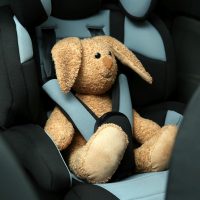How to Prevent Child Injury in Car Accident

There is nothing more frightening than seeing your child hurt. If you have kids and you drive a car, there are important steps to take to limit the likelihood of your child being hurt in a crash. Read on for tips on how to prevent child injury in a car accident. If your child or another loved one has been hurt in a crash, call a compassionate Lancaster car accident lawyer.
Use the Right Restraint for the Child’s Age
California law requires and the federal Centers for Disease Control and Prevention (CDC) recommends certain types of child restraints be used in vehicles depending on the age of the child passengers. Using the appropriate type of safety device for your child’s age, weight, and height drastically reduces the likelihood of serious injury should an accident occur.
The following types of car seats are required under California law:
- Ages 0 to 2: Any child under the age of two must sit in a rear-facing car seat in the back seat until the child either reaches 40 pounds in weight or 40 inches in height.
- Ages 2 to 8: Children under the age of eight must be secured in a car seat or booster seat in the back seat.
- Ages 8 to 16: Children who are either age eight or who have reached 4’9” in height may be secured by a booster seat but must at least be secured by a safety belt.
- Ages 16 & up: Any passenger aged 16 or older must wear a seatbelt according to California’s Mandatory Seat Belt law.
California law does not address precisely when a child should graduate from a five-point harness to a booster seat, but state safety experts recommend waiting until the child is ready. Wait until they outgrow the weight or height limits of the forward-facing harnesses, based on the manufacturer’s specifications.
Install the Car Seat Properly
Car seats are only effective if they are utilized correctly. Make sure to read the instructions on how to install the car seat, where to place the car seat in the vehicle, and how to secure your child in the car seat. Additionally, each individual car seat has different specifications with regard to height and weight limits.
Additional Safety Tips
Children who are under 4’9” should use a belt-positioning booster seat. Seat belts are designed for 165-pound male adults, so keep that in mind when deciding whether to “graduate” your children to the next type of safety device. Additionally, it is important to use a car seat for every single car ride, no matter how short; an accident can occur on a two-minute drive to the store.
The CDC also recommends putting children in the middle back seat wherever possible. The middle back seat is the safest place in the vehicle.
Finally, make sure to enforce good safety habits. For older children, strictly enforce seat-belt usage. Wear a seatbelt yourself at all times to demonstrate to your children how to be safe. Regular reminders will create good habits, keeping your children safe even when you are not around to protect them.
If you or a loved one has been injured in a car crash in Southern California or the Antelope Valley, talk to a seasoned and effective Lancaster car accident attorney about pursuing a claim for damages by calling the Kistler Law Firm at 661-206-6990.
